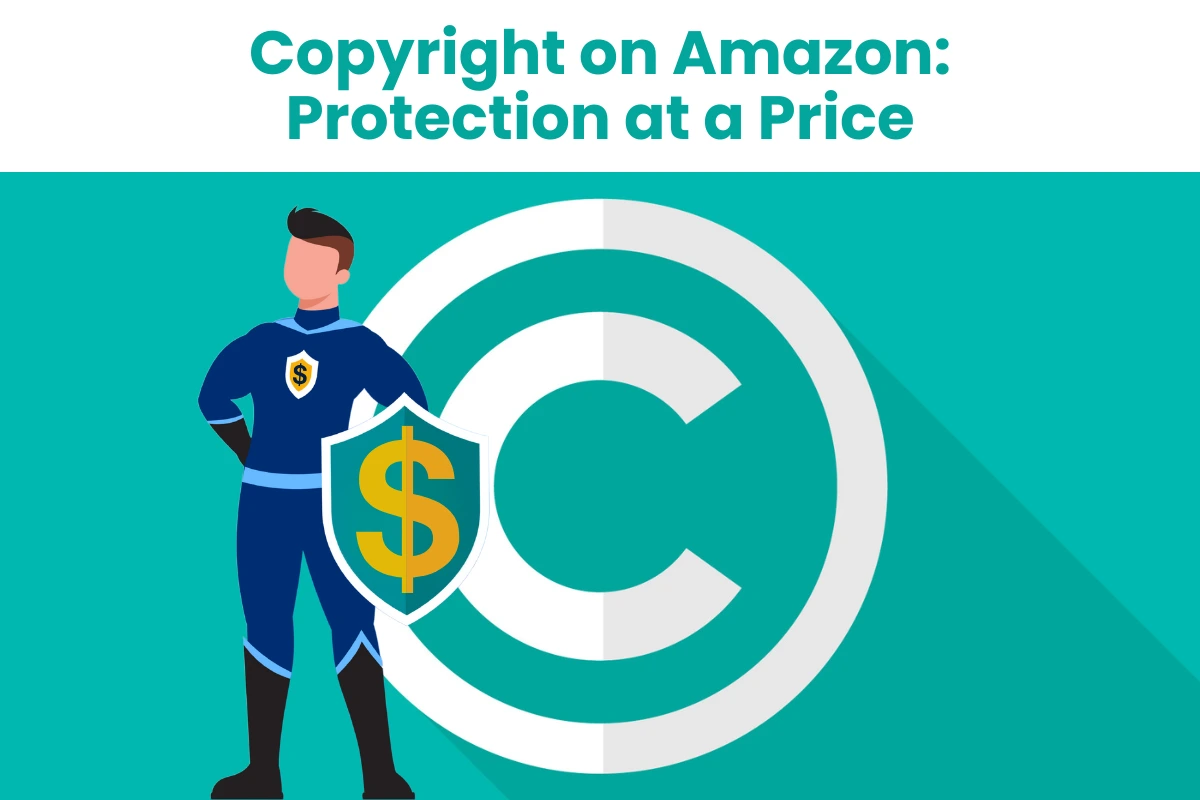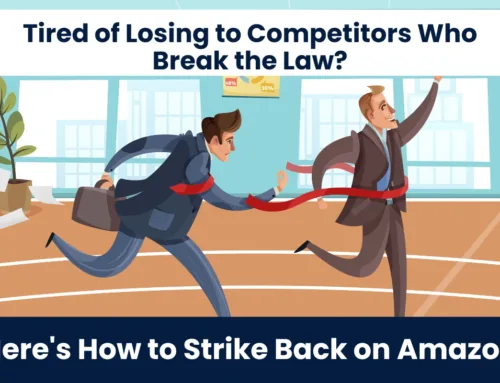Copyright is an essential form of intellectual property (IP) protection for Amazon sellers and online business owners, offering legal safeguards for creative assets. but enforcing it effectively often requires legal action, which can be costly. Sure, it protects original works like photos, videos, and written content, but when it comes to real enforcement on Amazon, copyright often causes more headaches than help—especially thanks to the DMCA takedown process.
In this post, we’ll break down why copyright can be both a weak shield and a dangerous weapon on Amazon. We’ll also explain how the DMCA (Digital Millennium Copyright Act) allows for quick takedowns with little consequence, making it a tool for abuse, especially by overseas sellers.
Copyright vs. Other IP Rights on Amazon
Before we dive in, let’s get one thing straight: Copyright is NOT the same as a trademark or a patent.
Copyright protects creative works like images, product descriptions, and videos.
Trademark protects your brand name, logo, and slogan from being copied.
Patent protects your inventions (design or utility).
On Amazon, trademark and patent rights tend to be stronger. Copyright? Not so much.
The DMCA Takedown Process: Fast and Loose
The Digital Millennium Copyright Act (DMCA) allows people to request the removal of copyrighted material online. Here’s how it works on Amazon:
Someone (anyone, really) files a DMCA takedown against a listing, claiming their copyrighted content was stolen (e.g., a product image or description).
Amazon removes the listing almost instantly. No questions asked.
The accused seller can file a counter-notice, saying the claim is false.
Amazon waits 10-14 days (sometimes longer) to reinstate the listing—IF the original filer doesn’t take further legal action.
This process creates two major problems for Amazon sellers:
It’s way too easy to take down a listing. Overseas sellers and bad actors exploit the system to attack competitors.
It takes forever to fix a false takedown. Even if you prove the claim is bogus, Amazon makes you wait up to two weeks to get your listing back. That’s two weeks of lost sales, which can be devastating.
DMCA Abuse: A Weapon for Dirty Sellers
Because DMCA takedowns are cheap, fast, and low-risk, shady sellers use them to wipe out competition.
Foreign sellers weaponize DMCA claims knowing there’s little consequence.
Scammers mass-file DMCA notices against top listings to knock them down.
Some sellers even claim copyright over generic product descriptions or images—which they don’t actually own.
Amazon rarely punishes abusers, which means this problem keeps getting worse.
What Can Sellers Do?
1. Trademarks Have Limited Use
While trademarks offer strong protection for brand names and logos, they do little to prevent DMCA takedowns. They can, however, provide credibility when fighting false claims. Trademarks give much stronger protections on Amazon. If you haven’t already, register your brand name with the USPTO and enroll in Brand Registry.
2. Keep Proof of Copyright Ownership, But Know It’s Rarely Registered
Most sellers don’t register their copyrights, but maintaining timestamps, drafts, and metadata can still help prove ownership in disputes. If you actually own a copyrighted image or description, document your creation process (timestamps, metadata, drafts, etc.) in case you need to fight back.
3. Use Legal Tools Like TROs to Halt Disruptions
Filing a Temporary Restraining Order (TRO) against a seller abusing the DMCA process can force them to cease further takedowns and provide immediate relief. If you get hit with a false DMCA takedown, file a counter-notice immediately. If the filer has no real case, Amazon will restore your listing after the waiting period.
4. Explore Innovative Legal Solutions
Beyond counter-notices, sellers can use Schedule A cases to target multiple infringers at once, freezing their funds to cover damages. Additionally, pursuing claims for defamation, tortious interference, or fraud can serve as a deterrent against future abuse. If a competitor keeps filing false DMCAs, you may have a case for defamation, tortious interference, or fraud. A legal threat can sometimes stop the abuse.
Bottom Line: Copyright is Weak on Amazon Unless You Are Willing to Go to Court
Copyright on Amazon is only as strong as your willingness to enforce it in court. While it has its place, it’s often too easy to abuse and too slow to fix when things go wrong. While it has its place, it’s too easy to abuse and too slow to fix when things go wrong. Trademarks and patents provide much better defenses.
The DMCA is statutory, and Amazon’s implementation of it is flawed, often requiring small business attorneys to step in for enforcement, but there are ways to navigate it effectively, including Schedule A cases that allow sellers to target multiple infringers and freeze funds to cover damages., but the best way to protect yourself is to focus on strong IP protections, act fast against false claims, and, if necessary, lawyer up.
Legal Disclaimer: This is not legal advice. If you have questions about your legal rights or any legal matter you wish to discuss, feel free to contact me at [email protected].
Need help from an experienced online business lawyer to protect your Amazon business? Reach out for legal guidance, free consultation options, and expert strategies to protect your brand from copyright abuse and IP infringements.



